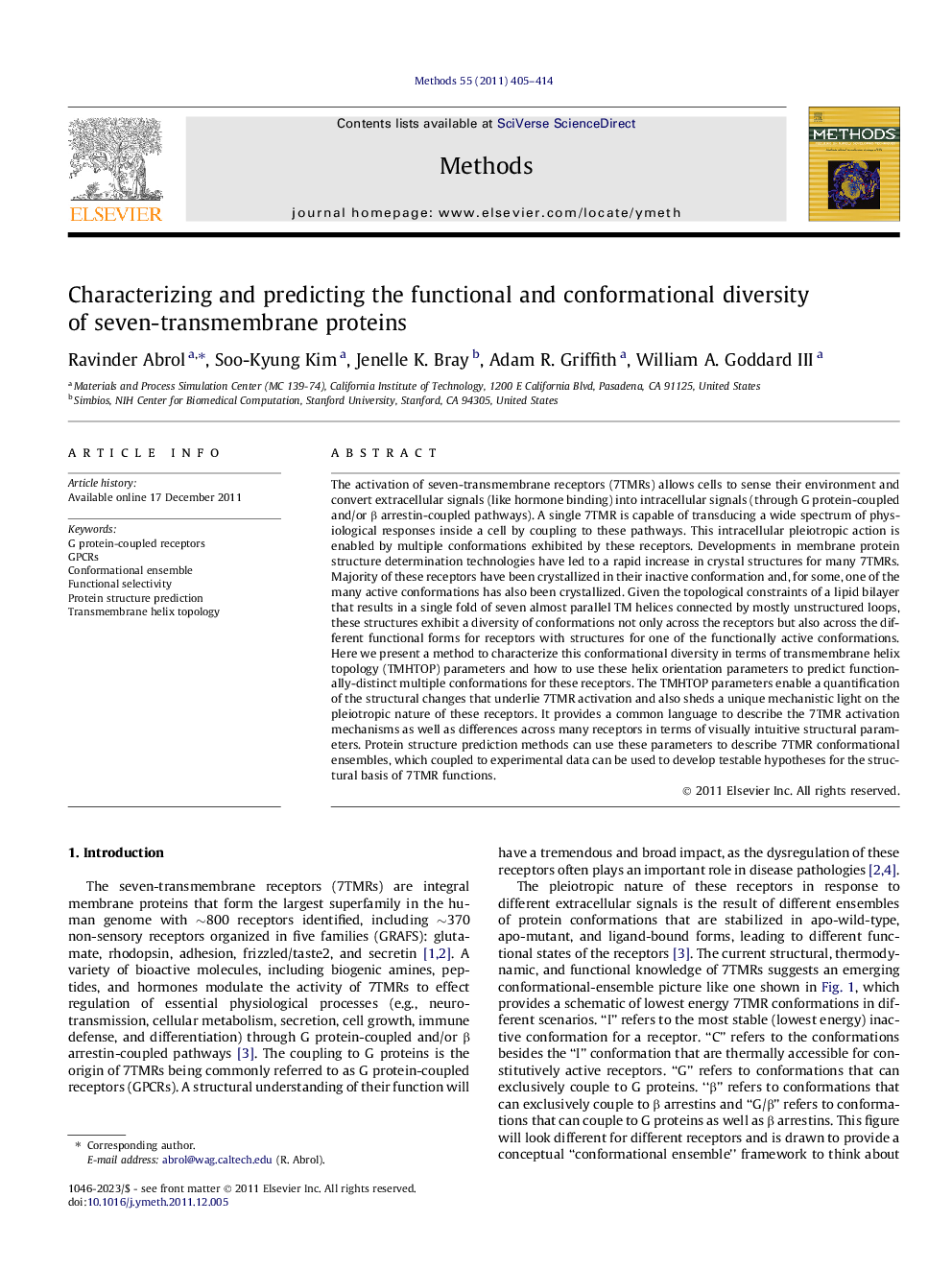| کد مقاله | کد نشریه | سال انتشار | مقاله انگلیسی | نسخه تمام متن |
|---|---|---|---|---|
| 1993713 | 1064700 | 2011 | 10 صفحه PDF | دانلود رایگان |

The activation of seven-transmembrane receptors (7TMRs) allows cells to sense their environment and convert extracellular signals (like hormone binding) into intracellular signals (through G protein-coupled and/or β arrestin-coupled pathways). A single 7TMR is capable of transducing a wide spectrum of physiological responses inside a cell by coupling to these pathways. This intracellular pleiotropic action is enabled by multiple conformations exhibited by these receptors. Developments in membrane protein structure determination technologies have led to a rapid increase in crystal structures for many 7TMRs. Majority of these receptors have been crystallized in their inactive conformation and, for some, one of the many active conformations has also been crystallized. Given the topological constraints of a lipid bilayer that results in a single fold of seven almost parallel TM helices connected by mostly unstructured loops, these structures exhibit a diversity of conformations not only across the receptors but also across the different functional forms for receptors with structures for one of the functionally active conformations. Here we present a method to characterize this conformational diversity in terms of transmembrane helix topology (TMHTOP) parameters and how to use these helix orientation parameters to predict functionally-distinct multiple conformations for these receptors. The TMHTOP parameters enable a quantification of the structural changes that underlie 7TMR activation and also sheds a unique mechanistic light on the pleiotropic nature of these receptors. It provides a common language to describe the 7TMR activation mechanisms as well as differences across many receptors in terms of visually intuitive structural parameters. Protein structure prediction methods can use these parameters to describe 7TMR conformational ensembles, which coupled to experimental data can be used to develop testable hypotheses for the structural basis of 7TMR functions.
Journal: Methods - Volume 55, Issue 4, December 2011, Pages 405–414